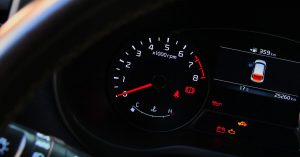 When the ‘check engine’ light glows on the dashboard, many drivers are confused about what it means and resort to extreme behaviors. Some become worried and rush to the nearest repair shop, while others ignore the light completely. The check engine light could either mean something minor or indicate a serious problem. Knowing what your check engine light is trying to tell you will help you react adequately and take the appropriate measures.
When the ‘check engine’ light glows on the dashboard, many drivers are confused about what it means and resort to extreme behaviors. Some become worried and rush to the nearest repair shop, while others ignore the light completely. The check engine light could either mean something minor or indicate a serious problem. Knowing what your check engine light is trying to tell you will help you react adequately and take the appropriate measures.
What Is a Check Engine Light?
The check engine light, also known as the malfunction indicator lamp (MIL), is part of the vehicle’s onboard diagnostic system. This light sends a signal from the vehicle’s engine computer about a malfunction. Make sure you don’t confuse the check engine light with the service required light, which simply reminds you that your car is due for routine service.
Don’t Panic, but Don’t Ignore the Light
A flashing light usually indicates a serious problem, such as a misfire, and needs attention as soon as possible. Consider reducing your speed and taking the car to a mechanic straight away.
A steady check engine light indicates a less urgent problem. Fearing hefty repair expenses, many drivers postpone their visit to a repair shop until it becomes too late. At this point, permanent damage is already done, and you end up with higher repair costs.
Five Common Things Your Check Engine Light Is Trying to Tell You
- The oxygen sensor needs to be replaced, which measures the amount of unburned oxygen in the exhaust system. Ignoring this issue could cause your vehicle to burn up to 40 percent more fuel. On top of that, spark plugs and the catalytic converter could become damaged.
- Your gas cap might be loose, damaged, or missing. As the fuel system sealant, the gas cap maintains pressure in the fuel tank and stops gasoline fumes from evaporating into the atmosphere.
- You need to replace your catalytic converter, which turns dangerous carbon monoxide into carbon dioxide. Neglecting this problem leads to a decrease in vehicle performance and fuel efficiency. Also, the engine’s temperature may raise and even cause the vehicle to fail an emissions test.
- You have to replace the mass airflow sensor, which measures the amount of air in the engine and determines the ideal amount of fuel needed for engine efficiency. A faulty sensor may damage spark plugs, oxygen sensors, or catalytic converter and hurt your car’s performance and fuel economy.
- You might have to replace your spark plugs or plug wires. Spark plugs are responsible for igniting air and fuel mixture in the combustion chamber, while plug wires deliver the spark from the ignition coil to the spark plugs. Worn components could negatively affect the vehicle’s performance and fuel economy. You could also end up with a clogged catalytic converter or damaged ignition coils and oxygen sensors.
Hopefully, this overview of typical problems that cause your check engine light to glow gives you some clarity about what it means. For proper detection of the issue and prevention of further damage to your vehicle, visit your dealership.
Image via pxhere by adonyi-foto. Used with permission via CC0 1.0 Universal / cropped from original








